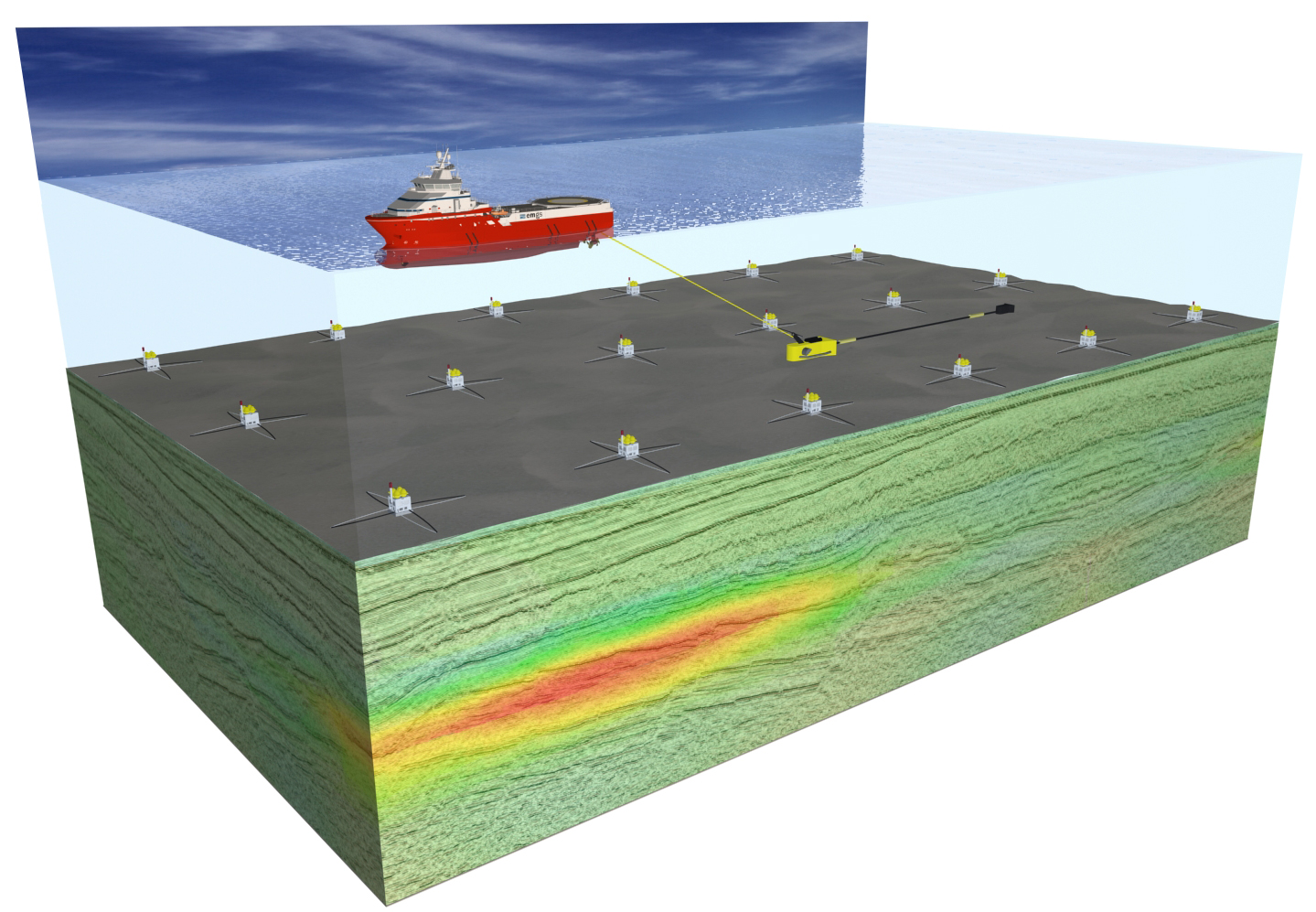Controlled Source Electromagnetics (CSEM)
Controlled Source Electromagnetics (CSEM) is a marine geophysical method mapping the subsurface resistivity.

A horizontal electric dipole source (HED) is towed across a grid or line of seabed receivers while emitting an electromagnetic field, with a predefined frequency content. The EM signal propagates through the subsurface and back to the seabed receivers.
The electromagnetic field measured by the receivers is dependent upon the resistivity distribution within the subsurface. With the presence of a resistive layer, such as a hydrocarbon charged reservoir, the EM signal can propagate with little attenuation in this layer. The signal will couple back into the formation and propagate upwards to the seabed. The EM field measured at the seafloor receivers will have higher amplitude when compared to the case where no such resistive layer is present.
A resistivity model of the subsurface can be reconstructed from the measured data through a numerical inversion process. Such models can be uploaded to a workstation and integrated with seismic and well log data.